Your Cancer. Your Choice.
Your Cancer. Your Choice. > The inevitable Surge of Technology
Accuracy toward technology
The radical treatments take their roots at the beginning of the 20th century. Despite an extraordinary experience and technical and technological improvements in the field the invisibility of prostate cancer has been the ceiling justifying the eradication strategy surgically or by radiation for more than a century (pictures 37, 42, 47).
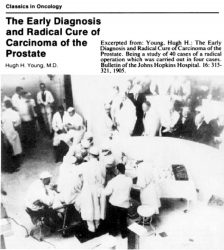
Pictures 37 : The first radical prostatectomy in the John Hopkin Hospital (Baltimore, US) and the concomitant publication of the first serie of 4 cases
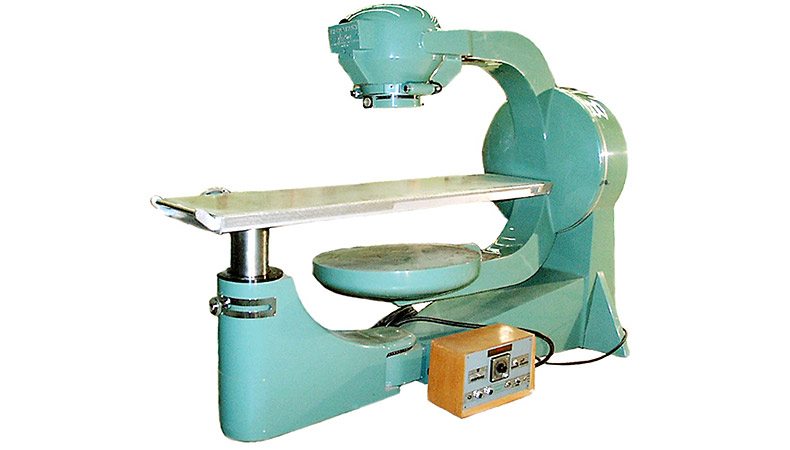
Pictures 42 : The Theratron junior a Cobalt-60 radiation therapy equipment in use in the 50’s
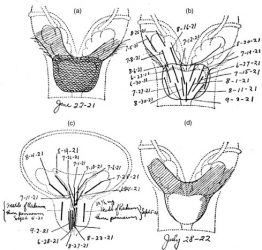
Pictures 47 : Drawing of the Barringer interstitial technique in the MSKCC (1924)
The ability to see the lesion(s) inside the prostate opens a new era in early prostate cancer and particularly for its less aggressive presentations. mpMRI is a milestone in the prostate cancer diagnostic expertise and the index lesion has overcome prostate cancer multifocality as the obstacle to make the focal approach relevant (pictures 19 and 53). These two scientific breakthroughs have definitely changed the state of art in the management of localized prostate cancer.
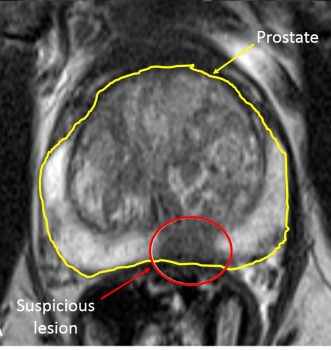
Pictures 19 : Axial T2W sequence
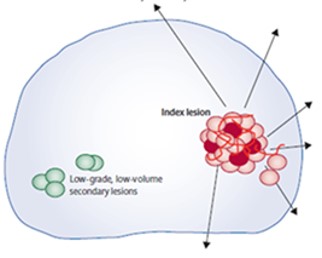
Pictures 53 : The index lesion is the most important lesion and leads the prognosis of the disease
The surge of very fine technology of MRI/US fusion softwares have brought the missing link to the field to perform with an unprecedented accuracy the destruction of the threatening part of the prostate while leaving untouched the healthy part and its sensitive functions (picture 32). As mentioned in « Diagnostic tools – mpMRI » new technologies are arriving to the field with the last generation of MRI equipment of 7T instead of 3T at the moment while a 10.5T MRI is evaluated in the research domain. Undoubtedly the diagnostic accuracy will increase at the same time that the molecular biology field is already exploring multimodal therapeutic strategies combining focal therapy with molecular targeted therapies [49]. Radical treatments have a key role when prostate cancer is localized or locally advanced and aggressive. However in early prostate cancer when less aggressive every time a prostate can be spared from a radical approach this option should be preferred. Whatever the relevant therapeutic strategy proposed to the patient it has to fulfilled two conditions : to be fully understood and to respond to the deepest aspirations of the patient (picture 90).
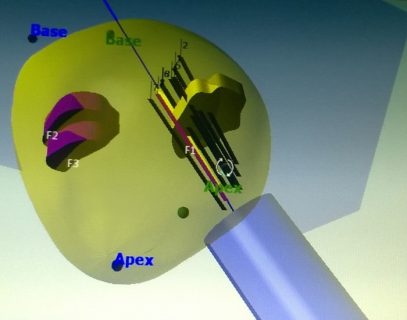
Pictures 32 : High resolution targeted biopsy procedure based on a MRI/US fusion system

Picture 90 : A patient-doctor relationship based on full understanding and confidence


